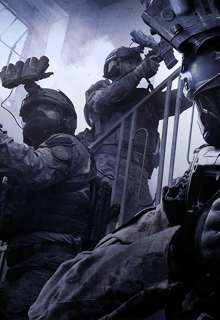Many PC ports are almost unplayable at launch, while their PlayStation and Xbox counterparts usually kick off with fewer bugs. In 2023, The Last of Us Part 1 and Star Wars Jedi: Survivor were the most popular examples of that phenomenon. A developer explains why PC gamers will have to just suck it up and accept this.

It's really a crappy situation. There are great games released every year and every year PC players are getting disappointed by unplayable versions, full of bugs, glitches and overall bad performance.
So you either get frustrated if you try to play an AAA game right after release, or you have to wait for the biggest issues to be fixed before you purchase the game – and your friends playing on console are already finished and have spoiled the game for you.
Last year, Digitaltrends stepped up and asked developers why it's always the PC version, and received an answer we didn't want to hear.
Why PC Ports Are Often Unplayable On Release
The senior vice president of Unity Create, Marc Whitten, said one of the main reasons for the poor PC ports are the different configurations each PC player uses. So the biggest strength of PCs is simultaneously their biggest weakness:
...the sheer diversity and variability of PC configurations that games will be played on … can definitely expose unexpected issues.
Well, damn.
Adding to that, there are the different operating systems. Is there a new driver update? Which version of the operating system is used? BIOS settings? Which additional software for mouse, keyboard and headset is installed? And which version of that?
If you've ever built a PC on your own, you know how many possibilities there are just concerning the hardware. There's an incalculable (I'm sure you could calculate the number, but I can't) amount of different combinations of components that might be used, like motherboard, graphics card and so on.
Even if the devs pinned down the most common ones, there would still be the software combinations that are causing issues.
All these possible configurations multiply into tens of thousands and even though the devs are fixing the issues for the most popular PC configurations, it's simply impossible to cover all of them. Whereas the configurations of the PS5 and Xbox Series are the same for every console.
John Johanas, the game director of The Evil Within 2 and Hi-Fi Rush agrees with Whitten.
It’s pretty unrealistic to think that you can make a product that will run flawlessly on what feels like an unlimited configuration of CPUs, GPUs, memory, and more likely, what is running in the background.
A long PC port development isn't necessarily a good one, like The Last of Us demonstrated. Since the newest and most common combinations may change multiple times during the process, it's hard for the devs to stay adjusted.
As a result, TLoU was almost unplayable on release, frustrating players with plenty of in-game loading breaks (each with several minutes of waiting time) and crashes. And it was a similar story for Jedi: Survivor: The game consumed so much computing power that even high-end hardware PCs were brought to their knees.
And as if that weren't enough reasons, there's the budget for the games. While it would of course be ideal to be able to scale graphics settings for a wide variety of configurations, development costs severely limit these possibilities, according to Hideyuki Miyashita, systems programmer on Hi-Fi Rush.
Considering that PCs aren't getting simpler – in fact they're getting more complex – this issues probably will exist as long as PC gaming will.
So all there's left for PC gamers is to be patient. Because once the issues are fixed, the great diversity of configurations and hardware can become the best part of PC gaming.


























